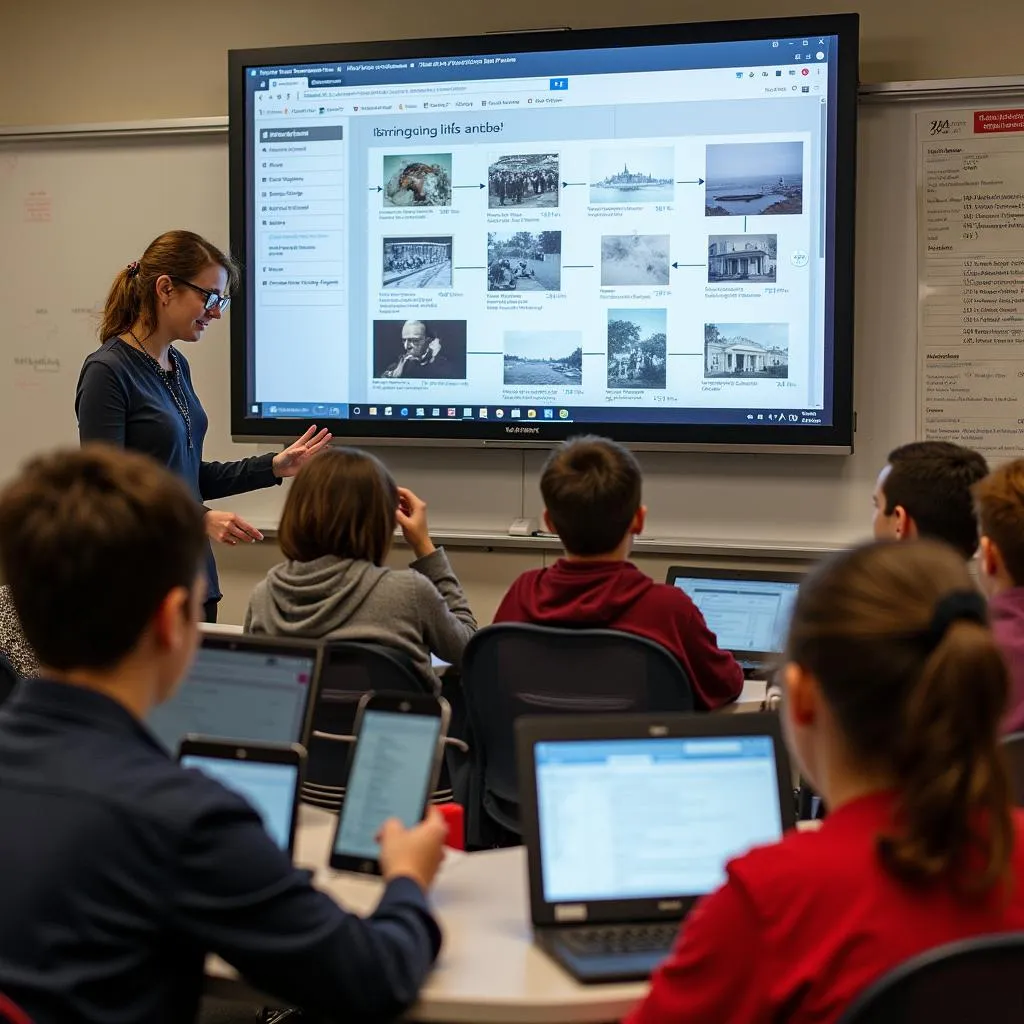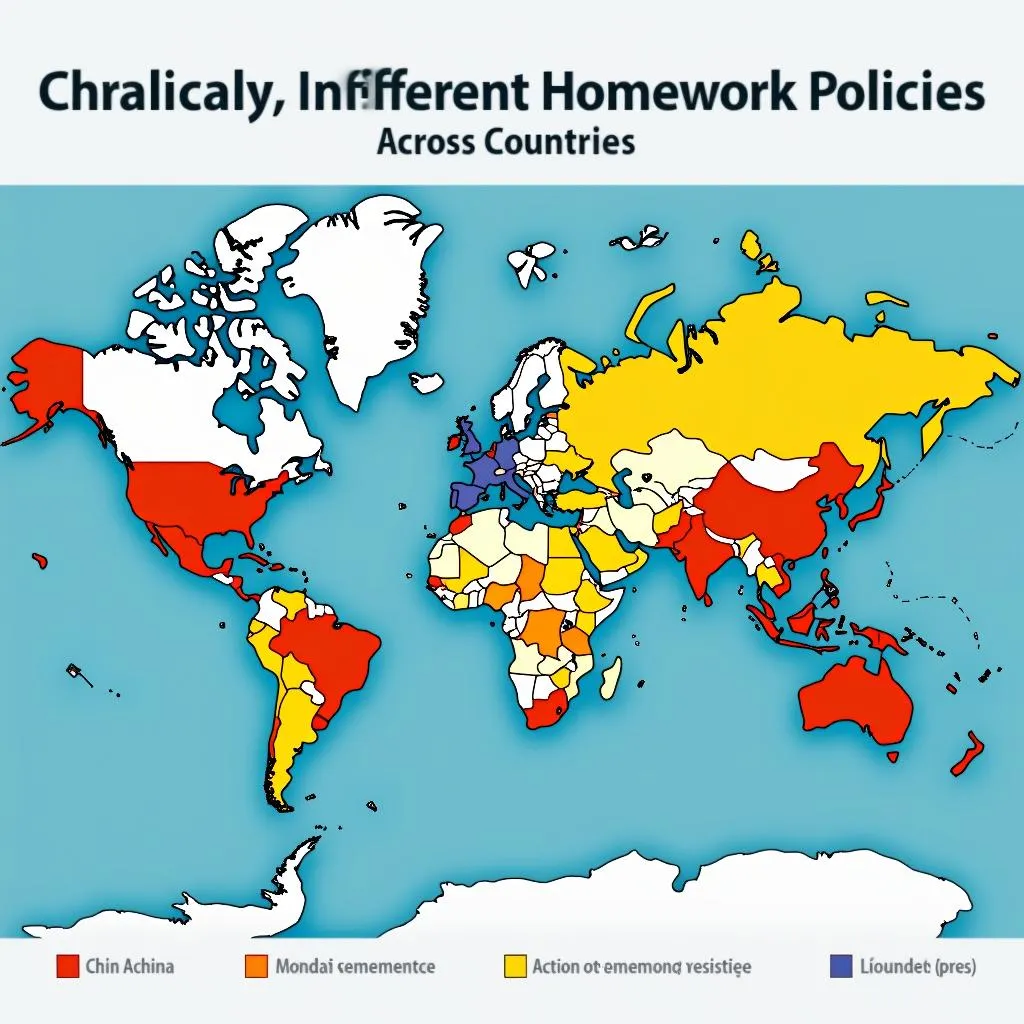The integration of digital archives in teaching history is a fascinating topic that often appears in IELTS Reading tests. As an experienced IELTS instructor, I’ve created a comprehensive practice test to help you prepare for this subject. Let’s dive into the passages and questions that mirror the actual IELTS exam structure.
Nội dung bài viết
- Passage 1 – Easy Text
- The Digital Revolution in Historical Education
- Questions 1-5
- Questions 6-10
- Passage 2 – Medium Text
- The Challenges and Opportunities of Digital Archive Integration
- Questions 11-14
- Questions 15-19
- Passage 3 – Hard Text
- The Future of Digital Archives in Historical Pedagogy
- Questions 20-23
- Questions 24-26
- Questions 27-30
- Answer Key
- Passage 1
- Passage 2
- Passage 3
Passage 1 – Easy Text
The Digital Revolution in Historical Education
The advent of digital technology has revolutionized the way history is taught and learned. In recent years, the integration of digital archives into history education has opened up new possibilities for both educators and students. These digital repositories provide unprecedented access to primary sources, including documents, photographs, and audio-visual materials that were once confined to physical archives.
One of the most significant advantages of using digital archives in history education is the ability to bring history to life. Students can now engage directly with historical documents and artifacts, allowing for a more immersive and interactive learning experience. This approach not only enhances understanding but also develops critical thinking skills as students learn to analyze and interpret primary sources.
Cultural sensitivity in teaching global history has become increasingly important, and digital archives play a crucial role in this aspect. They provide access to diverse perspectives and voices that may have been overlooked in traditional historical narratives.
 Digital archives enhancing history education
Digital archives enhancing history education
Questions 1-5
Do the following statements agree with the information given in the passage? Write
TRUE if the statement agrees with the information
FALSE if the statement contradicts the information
NOT GIVEN if there is no information on this
- Digital archives have made historical documents more accessible to students.
- The use of digital archives in history education is limited to universities.
- Digital archives help develop students’ critical thinking skills.
- Traditional teaching methods are more effective than using digital archives.
- Digital archives provide access to diverse historical perspectives.
Questions 6-10
Complete the sentences below. Choose NO MORE THAN TWO WORDS from the passage for each answer.
- The integration of digital archives has __ the teaching and learning of history.
- Digital repositories provide __ to primary sources that were previously only available in physical archives.
- Students can now __ with historical documents and artifacts through digital archives.
- Using digital archives in history education creates a more __ learning experience.
- Digital archives play a crucial role in promoting __ in teaching global history.
Passage 2 – Medium Text
The Challenges and Opportunities of Digital Archive Integration
While the integration of digital archives in teaching history offers numerous benefits, it also presents several challenges. One of the primary concerns is the digital divide, which refers to the gap between those who have access to digital technologies and those who do not. This disparity can create inequalities in educational opportunities, particularly in regions with limited technological infrastructure.
Another challenge lies in the authenticity and reliability of digital sources. As the volume of digitized historical materials grows, it becomes increasingly important for students and educators to develop strong critical evaluation skills. They must learn to discern between credible sources and potentially misleading or inaccurate information.
Despite these challenges, the opportunities presented by digital archives are substantial. They allow for the preservation and dissemination of historical knowledge on an unprecedented scale. Many institutions are now collaborating to create vast online repositories, making rare and fragile documents accessible to a global audience.
How education is addressing cultural biases in history is closely tied to the use of digital archives. These resources often include perspectives that have been historically marginalized, providing a more comprehensive view of the past.
Moreover, digital archives facilitate interdisciplinary approaches to historical study. They enable researchers and students to make connections between different historical events, cultures, and time periods more easily. This interconnectedness fosters a deeper understanding of complex historical processes and their long-term impacts.
 Challenges and opportunities of digital archives in history education
Challenges and opportunities of digital archives in history education
Questions 11-14
Choose the correct letter, A, B, C, or D.
-
The digital divide in education refers to:
A) The gap between students’ and teachers’ technological skills
B) The difference in quality between digital and physical archives
C) The disparity in access to digital technologies
D) The varying levels of interest in digital learning among students -
One of the challenges of using digital archives in teaching history is:
A) The limited availability of historical documents
B) The need for critical evaluation skills
C) The high cost of digitization
D) The lack of interest from educational institutions -
Digital archives contribute to the preservation of historical knowledge by:
A) Replacing physical archives entirely
B) Making rare documents accessible to a global audience
C) Focusing solely on recent historical events
D) Limiting access to professional historians -
The use of digital archives in history education promotes:
A) A focus on local history only
B) The exclusion of marginalized perspectives
C) Interdisciplinary approaches to historical study
D) A simplified view of historical events
Questions 15-19
Complete the summary below. Choose NO MORE THAN TWO WORDS from the passage for each answer.
The integration of digital archives in teaching history offers both challenges and opportunities. One major concern is the (15) __, which can lead to inequalities in education. Another issue is ensuring the (16) __ of digital sources. However, digital archives also present significant benefits, such as the (17) __ of historical knowledge on a large scale. They facilitate (18) __ to historical study and help in addressing (19) __ in history education.
Passage 3 – Hard Text
The Future of Digital Archives in Historical Pedagogy
The rapid advancement of technology continues to shape the landscape of historical education, with digital archives at the forefront of this transformation. As we look to the future, several key trends are emerging that will likely define the role of digital archives in historical pedagogy.
One significant development is the application of artificial intelligence (AI) and machine learning to enhance the functionality of digital archives. These technologies have the potential to revolutionize how we interact with historical data. AI algorithms can analyze vast amounts of digitized documents, identifying patterns and connections that might elude human researchers. This capability opens up new avenues for historical inquiry and interpretation.
Furthermore, the integration of virtual reality (VR) and augmented reality (AR) technologies with digital archives promises to create immersive historical experiences. Students could potentially “walk through” recreated historical environments or interact with 3D models of artifacts, providing a level of engagement previously unattainable in traditional classroom settings.
The concept of crowdsourcing is also gaining traction in the realm of digital archives. This approach involves leveraging the collective knowledge and efforts of the public to enhance and expand digital collections. Crowdsourcing initiatives can range from transcription projects to the identification of individuals in historical photographs, fostering a sense of community engagement with historical materials.
How traditional farming methods are taught in agricultural schools is an example of how digital archives can preserve and disseminate practical historical knowledge. These archives can include not just textual information, but also visual and audio recordings of traditional techniques.
However, as digital archives become more sophisticated and integral to historical education, new ethical considerations arise. Questions of data privacy, intellectual property rights, and the potential for digital manipulation of historical sources must be addressed. Educators and archivists will need to develop robust frameworks to ensure the ethical use and preservation of digital historical materials.
The interoperability of digital archives is another crucial aspect of their future development. As the number of digital repositories grows, the ability to seamlessly search and access information across multiple platforms becomes increasingly important. Efforts to establish common standards and protocols for digital archives will be essential in maximizing their educational potential.
Cultural heritage and its place in global education systems is closely tied to the evolution of digital archives. These repositories play a vital role in preserving and sharing cultural heritage across borders, fostering global understanding and appreciation of diverse historical narratives.
Looking ahead, the integration of digital archives in teaching history will likely become more nuanced and sophisticated. It will require ongoing collaboration between historians, educators, technologists, and policymakers to fully harness the potential of these digital resources while addressing the challenges they present.
 The future of digital archives in historical education
The future of digital archives in historical education
Questions 20-23
Choose FOUR letters, A-H.
Which FOUR of the following are mentioned as future trends in digital archives for historical education?
A) The use of artificial intelligence for data analysis
B) The complete replacement of physical archives
C) The integration of virtual reality experiences
D) The focus on local history exclusively
E) The implementation of crowdsourcing initiatives
F) The elimination of textbooks in history classes
G) The development of interoperability standards
H) The restriction of access to professional historians only
Questions 24-26
Complete the sentences below. Choose NO MORE THAN TWO WORDS from the passage for each answer.
- The use of AI in digital archives can help identify __ that human researchers might miss.
- Crowdsourcing in digital archives can foster a sense of __ with historical materials.
- The __ of digital archives across multiple platforms is crucial for maximizing their educational potential.
Questions 27-30
Do the following statements agree with the claims of the writer in the passage? Write
YES if the statement agrees with the claims of the writer
NO if the statement contradicts the claims of the writer
NOT GIVEN if it is impossible to say what the writer thinks about this
- Virtual reality will completely replace traditional classroom teaching in history education.
- Ethical considerations regarding digital archives need to be addressed as they become more integral to education.
- Digital archives will eventually make the role of professional historians obsolete.
- The future of digital archives in historical education will require collaboration across various disciplines.
Answer Key
Passage 1
- TRUE
- NOT GIVEN
- TRUE
- NOT GIVEN
- TRUE
- revolutionized
- unprecedented access
- engage directly
- immersive
- cultural sensitivity
Passage 2
- C
- B
- B
- C
- digital divide
- authenticity and reliability
- preservation and dissemination
- interdisciplinary approaches
- cultural biases
Passage 3
- A, C, E, G
- patterns and connections
- community engagement
- interoperability
- NOT GIVEN
- YES
- NOT GIVEN
- YES
The integration of digital archives in teaching history is a complex and evolving field that offers numerous benefits and challenges. As we’ve seen in these passages, it has the potential to transform historical education by providing unprecedented access to primary sources, fostering critical thinking skills, and creating more engaging learning experiences.
The impact of film education on cultural awareness is another area where digital archives can play a significant role, providing historical context and visual resources to enhance understanding.
By practicing with these IELTS-style questions and passages, you can improve your reading comprehension skills and familiarize yourself with the types of topics and question formats you might encounter in the actual IELTS Reading test. Remember to manage your time effectively and always refer back to the text when answering questions. Good luck with your IELTS preparation!


